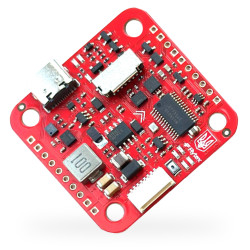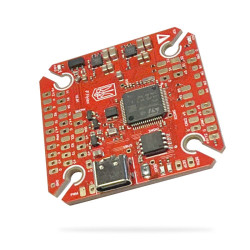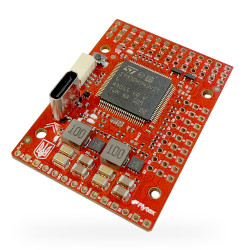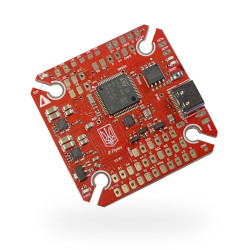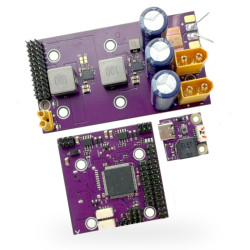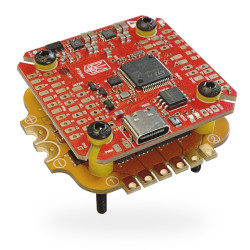A flight controller is the central command center for a drone. It is a sophisticated system that manages the drone's movement and controls various aspects of flight, including stability, balance, responsiveness, and maneuverability.
The flight controller for FPV (First Person View) is the heart of the drone, responsible for controlling and stabilizing its flight. This device processes information from sensors such as gyroscopes, accelerometers and GPS and adjusts the engines accordingly, ensuring a stable and precise flight.
The main functions of the flight controller:
1. Stabilization – the flight controller ensures stability of the drone, especially during sharp maneuvers or wind.
2. Autopilot – Many controllers support automatic flight functions such as return home, route flight, auto takeoff and autoland.
3. FPV Camera Integration – The controller works in tandem with the FPV camera, transmitting real-time video to the pilot's remote control or goggles.
4. Telemetry - transmits important flight data such as battery level, altitude, speed, position in space.
Depending on the complexity and purpose, flight controllers can have different functionality, from basic for beginners to professional models with an advanced set of sensors and settings.
FC Flight controllers
Model: Flytex Furia H743 Slim12S
2 400.00 грн.
Flytex Furia H743 SLIM 12S - High performance flight controller for FPV quadcopters
The Flytex Furia H743 SLIM 12S is a top-of-the-line flight con..
Model: Fuzia F405 8S V2
1 000.00 грн.
Flytex Fuzia F405 8S V2 is a new generation flight controller developed in collaboration with CrashDetect for maximum reliability and performance. Sup..
Model: Flytex Furia H743 Wing
2 400.00 грн.
A flight controller is the central command center for a drone. It is a sophisticated system that manages the drone's movement and controls various asp..
Model: Flytex CRASHDETECT F405 8S v2
1 000.00 грн.
Flytex Fuzia F405 CRASHDETECT F405 8S v2 is a new generation flight controller developed in collaboration with CrashDetect for maximum reliability and..
Model: Flytex Furia 12S H743 WING KIT
3 200.00 грн.
Flytex Furia 12S H743 — kit for FPV and unmanned systems Flytex Furia 12S H743 is a professional kit designed for reliable operation in high-voltage F..
Model: Stack Flytex Fuzia F405 8S V2
3 400.00 грн.
The FLYTEX flight stack kit includes a powerful FUZIA F405 8S V2 flight controller and a high-current Flytex 80A 8S 4-in-1 ESC with AM32 firmware. Thi..

